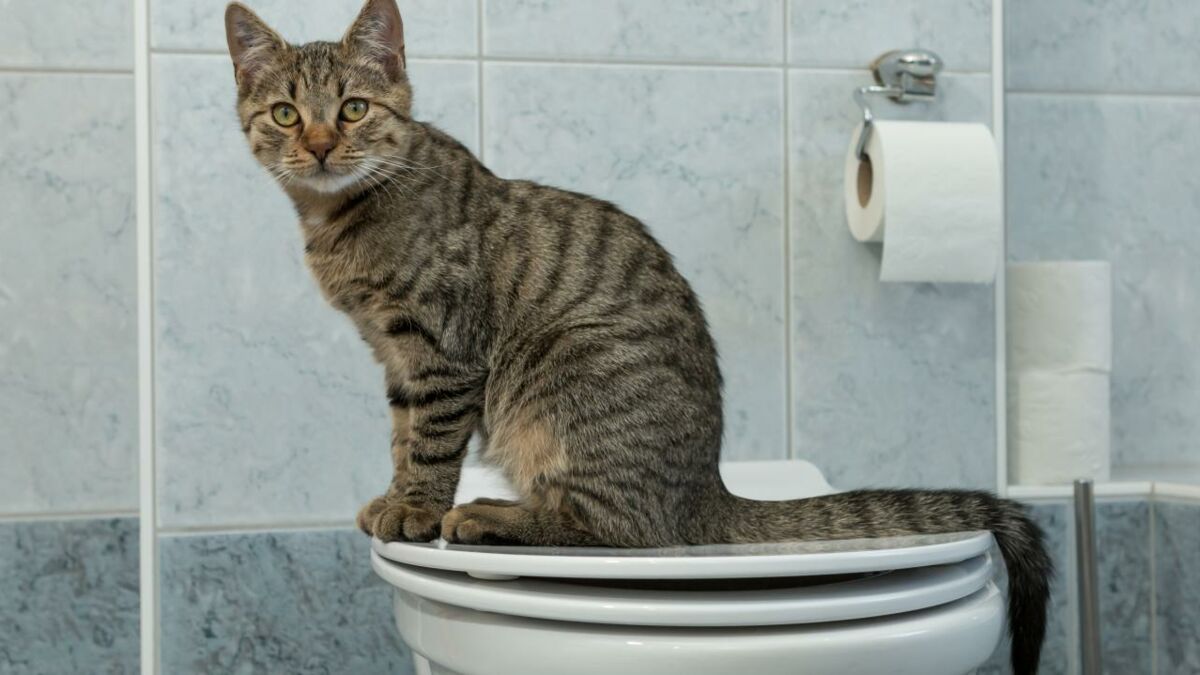Avoid Flush Cat Poop Down Your Toilet - Maintain Your Home's Plumbing Integrity
Avoid Flush Cat Poop Down Your Toilet - Maintain Your Home's Plumbing Integrity
Blog Article
We have come across this article relating to Can You Flush Cat Poo or Litter Down the Toilet? below on the internet and think it made sense to write about it with you here.

Introduction
As pet cat owners, it's vital to be mindful of how we dispose of our feline buddies' waste. While it may seem convenient to flush cat poop down the toilet, this practice can have harmful repercussions for both the atmosphere and human health.
Alternatives to Flushing
Thankfully, there are safer and more responsible ways to dispose of pet cat poop. Take into consideration the complying with options:
1. Scoop and Dispose in Trash
The most typical technique of getting rid of cat poop is to scoop it into an eco-friendly bag and throw it in the garbage. Make sure to make use of a devoted clutter scoop and take care of the waste immediately.
2. Usage Biodegradable Litter
Choose biodegradable cat trash made from products such as corn or wheat. These clutters are environmentally friendly and can be safely thrown away in the garbage.
3. Hide in the Yard
If you have a yard, consider burying feline waste in a marked location far from veggie yards and water resources. Make sure to dig deep sufficient to avoid contamination of groundwater.
4. Set Up a Pet Waste Disposal System
Purchase a family pet waste disposal system particularly developed for cat waste. These systems utilize enzymes to break down the waste, decreasing odor and ecological effect.
Health and wellness Risks
In addition to ecological problems, flushing cat waste can additionally present health and wellness dangers to human beings. Pet cat feces may have Toxoplasma gondii, a bloodsucker that can cause toxoplasmosis-- a potentially severe disease, specifically for expectant females and individuals with weakened body immune systems.
Environmental Impact
Purging pet cat poop introduces hazardous microorganisms and bloodsuckers into the water supply, posturing a considerable risk to aquatic ecological communities. These contaminants can negatively affect aquatic life and concession water quality.
Final thought
Accountable family pet possession extends beyond offering food and shelter-- it likewise includes appropriate waste administration. By refraining from flushing feline poop down the bathroom and choosing different disposal approaches, we can lessen our ecological footprint and safeguard human health.
Why Can’t I Flush Cat Poop?
It Spreads a Parasite
Cats are frequently infected with a parasite called toxoplasma gondii. The parasite causes an infection called toxoplasmosis. It is usually harmless to cats. The parasite only uses cat poop as a host for its eggs. Otherwise, the cat’s immune system usually keeps the infection at low enough levels to maintain its own health. But it does not stop the develop of eggs. These eggs are tiny and surprisingly tough. They may survive for a year before they begin to grow. But that’s the problem.
Our wastewater system is not designed to deal with toxoplasmosis eggs. Instead, most eggs will flush from your toilet into sewers and wastewater management plants. After the sewage is treated for many other harmful things in it, it is typically released into local rivers, lakes, or oceans. Here, the toxoplasmosis eggs can find new hosts, including starfish, crabs, otters, and many other wildlife. For many, this is a significant risk to their health. Toxoplasmosis can also end up infecting water sources that are important for agriculture, which means our deer, pigs, and sheep can get infected too.
Is There Risk to Humans?
There can be a risk to human life from flushing cat poop down the toilet. If you do so, the parasites from your cat’s poop can end up in shellfish, game animals, or livestock. If this meat is then served raw or undercooked, the people who eat it can get sick.
In fact, according to the CDC, 40 million people in the United States are infected with toxoplasma gondii. They get it from exposure to infected seafood, or from some kind of cat poop contamination, like drinking from a stream that is contaminated or touching anything that has come into contact with cat poop. That includes just cleaning a cat litter box.
Most people who get infected with these parasites will not develop any symptoms. However, for pregnant women or for those with compromised immune systems, the parasite can cause severe health problems.
How to Handle Cat Poop
The best way to handle cat poop is actually to clean the box more often. The eggs that the parasite sheds will not become active until one to five days after the cat poops. That means that if you clean daily, you’re much less likely to come into direct contact with infectious eggs.
That said, always dispose of cat poop in the garbage and not down the toilet. Wash your hands before and after you clean the litter box, and bring the bag of poop right outside to your garbage bins.
https://trenchlesssolutionsusa.com/why-cant-i-flush-cat-poop/

Do you like more info about How to Dispose of Cat Poop and Litter Without Plastic Bags? Post a short review further down. We'd be pleased to see your opinion about this posting. We are looking forward that you visit us again later on. For those who liked our blog posting please make sure you remember to share it. Many thanks for going through it.
Get Offer Report this page